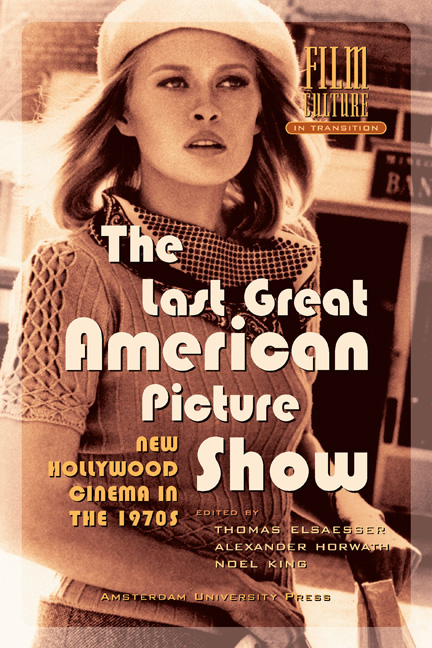A Walking Contradiction (Partly Truth and Partly Fiction)
Published online by Cambridge University Press: 25 January 2021
Summary
Usually, the tale of a New Hollywood is founded on two genealogies. The mainstream version begins with THE GRADUATE, POINT BLANK AND BONNIE AND CLYDE (all 1967) and their acknowledged debt to European art cinema. The parallel – and slightly more “cultish” – genealogy opens with Roger Corman's 1960s productions at AIP, where filmmakers like Dennis Hopper, Monte Hellman, Jack Nicholson, Francis Ford Coppola, Peter Fonda, Peter Bogdanovich or Henry Jaglom were able to assume multiple functions, mainly for economic reasons, in a flexible working climate. The Corman Factory allowed them to learn the tools of the trade and to develop a less constrained, more personal filmmaking practice. They were part of a “low” culture, but for them the motto “film as art” was still free of derogatory connotations. Works such as Hellman's THE SHOOTING (1966) and Bogdanovich's TARGETS (1968) bear witness to a happy marriage of genre and modernist elements. AIP also produced films such as THE TRIP (1967) and WILD IN THE STREETS (1968) which explicitly addressed the counter-culture and topical political events. The cycle of biker films commencing with Corman's THE WILD ANGELS (1966) gave expression to a fundamentally nihilistic outlook and to a confusing mixture of “leftist” and “right-wing” elements. Hopper's EASY RIDER (1969), the major studio release which – in terms of characters, themes and personnel – merged all of these elements, became a huge commercial success.
In this narrative of New Hollywood, causality and linearity reign supreme, and the setting is always Los Angeles. The fact that the film industry and seemingly all wisdom about movie economy are LA-based tends to obscure other settings and sub-plots of the main story. In Martin Scorsese's MEAN STREETS (1973) there is a scene in which Harvey Keitel and Robert de Niro go to the movies and watch one of Corman's Poe adaptions starring Vincent Price. In the foyer of the theatre we can see three film posters: POINT BLANK by John Boorman, Corman's X – THE MAN WITH THE X-RAY EYES and HUSBANDS by John Cassavetes. In a sense, this is Scorsese's understanding of how the bastard-child New Hollywood (exemplified by MEAN STREETS itself) came into being: It was conceived from the union of the Americanized art film (POINT BLANK), homegrown independent exploitation films (X) and New York based “outsider cinema” (Husbands).
- Type
- Chapter
- Information
- The Last Great American Picture ShowNew Hollywood Cinema in the 1970s, pp. 83 - 106Publisher: Amsterdam University PressPrint publication year: 2004



